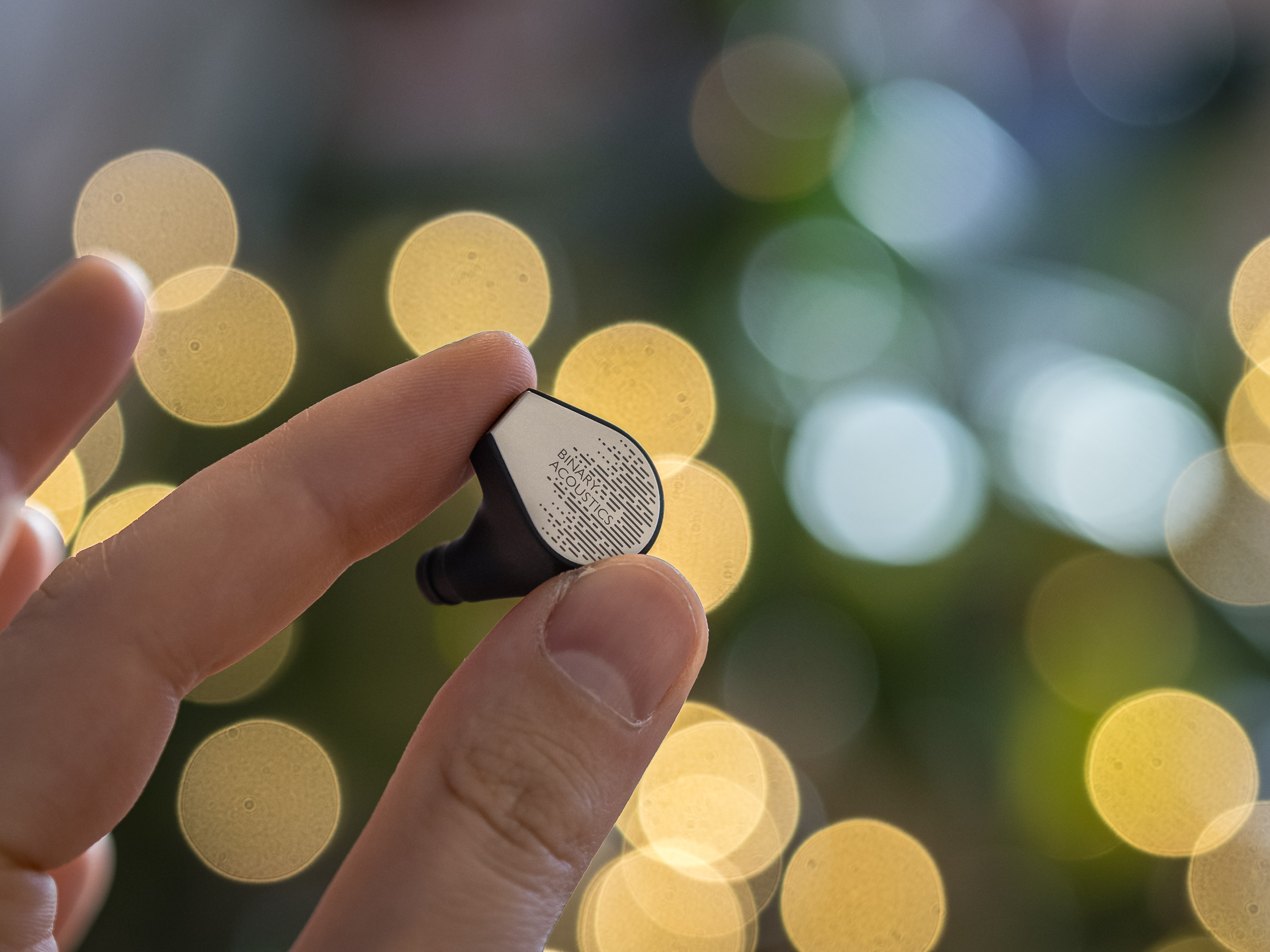
Quick Navigation
Introduction
Welcome to my short review of the Gizaudio x Binary Acoustics Chopin IEM review. My impressions are based on a loaner from Germany‘s official distributor (NT Global). I recommend reading my disclaimer linked below to understand my MotT status and involvement in the community.
Full transparency about my business insider status. Read the disclaimer.
The Chopin is a 200 USD hybrid IEM design with a dynamic driver (DD) for the low-end and 3 balanced armature receivers (BA) for mids and highs. One BA covers the midrange and a dual-BA recreates the highs, resulting in a 3-way design. By now, the market is swamped with very similar hybrid designs, so the question is what the company‘s USP is.
Get the Gizaudio x Binary Acoustics Chopin IEM from NT-Global. (Not an affiliate link.)
I have to admit that I have never heard of Binary Acoustics before. By now it must be the 200th Chi-Fi brand going for a Harman-esque tuned IEM and trying to win over fans. And the trick here is to have collaborated with Gizaudio. I don‘t follow many reviewers, because nowadays influential reviewers aren‘t critical but often merely provide an advertisement platform. I have to admit that I enjoyed some of the fast-paced videos on the Gizaudio YouTube channel, but I also have some disagreement with some of their content. (The Hiby R3 II will receive its own review.)
Long story short, what I gather from Chopin‘s product text is that Gizaudio provided their IEC 711 target response but were not involved in any acoustical engineering. Their contribution is described as „simulated frequency curve suggestions“. Now that is an incredible feat to have your name at the front of a product, but it‘s understandable seeing how Binary was previously completely unknown (to me).
Hardware
The Chopin comes in minimal packaging but also provides everything you need. A hard plastic shell, small velour pouches (exactly the same as used by Softears) and a very nice cable. The 2-pin cable is twirled and not woven, but is more than adequate for the price. It caters to hifi users instead of stage musicians.
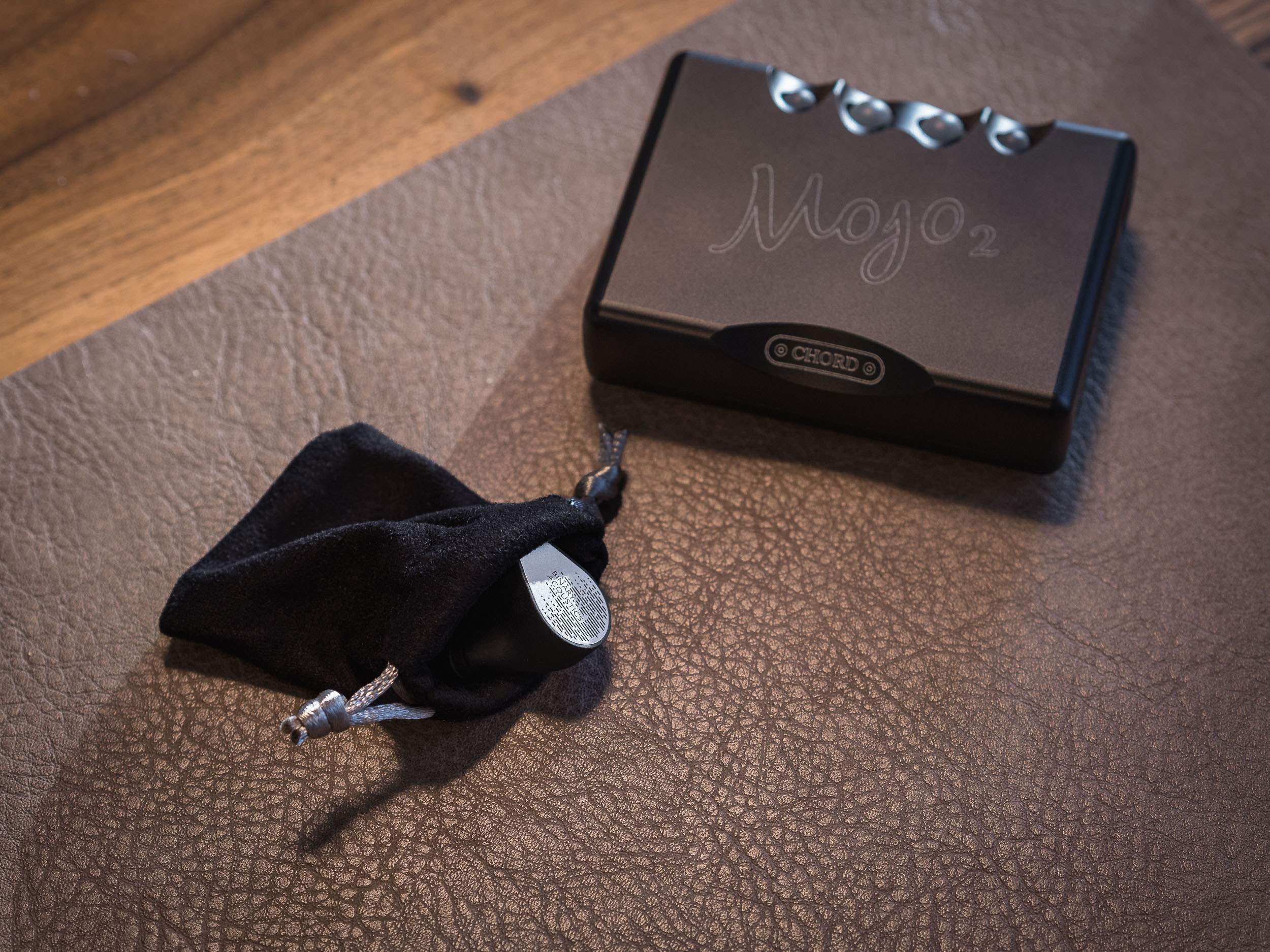
The 3D-printed IEM shells are ergonomic and smooth. The nozzle is a bit longer than many other designs, so I don‘t get as deep of a fit as with some other IEM. Fortunately, I don‘t have any issues with comfort whatsoever. If there is something I‘d recommend to Binary, though, is that the nozzle should provide some kind of cerumen protection.
I don‘t see any „Chopin“ in the matt black shells or the metal faceplates. I think it‘s a missed opportunity for typical piano colors or even materials.
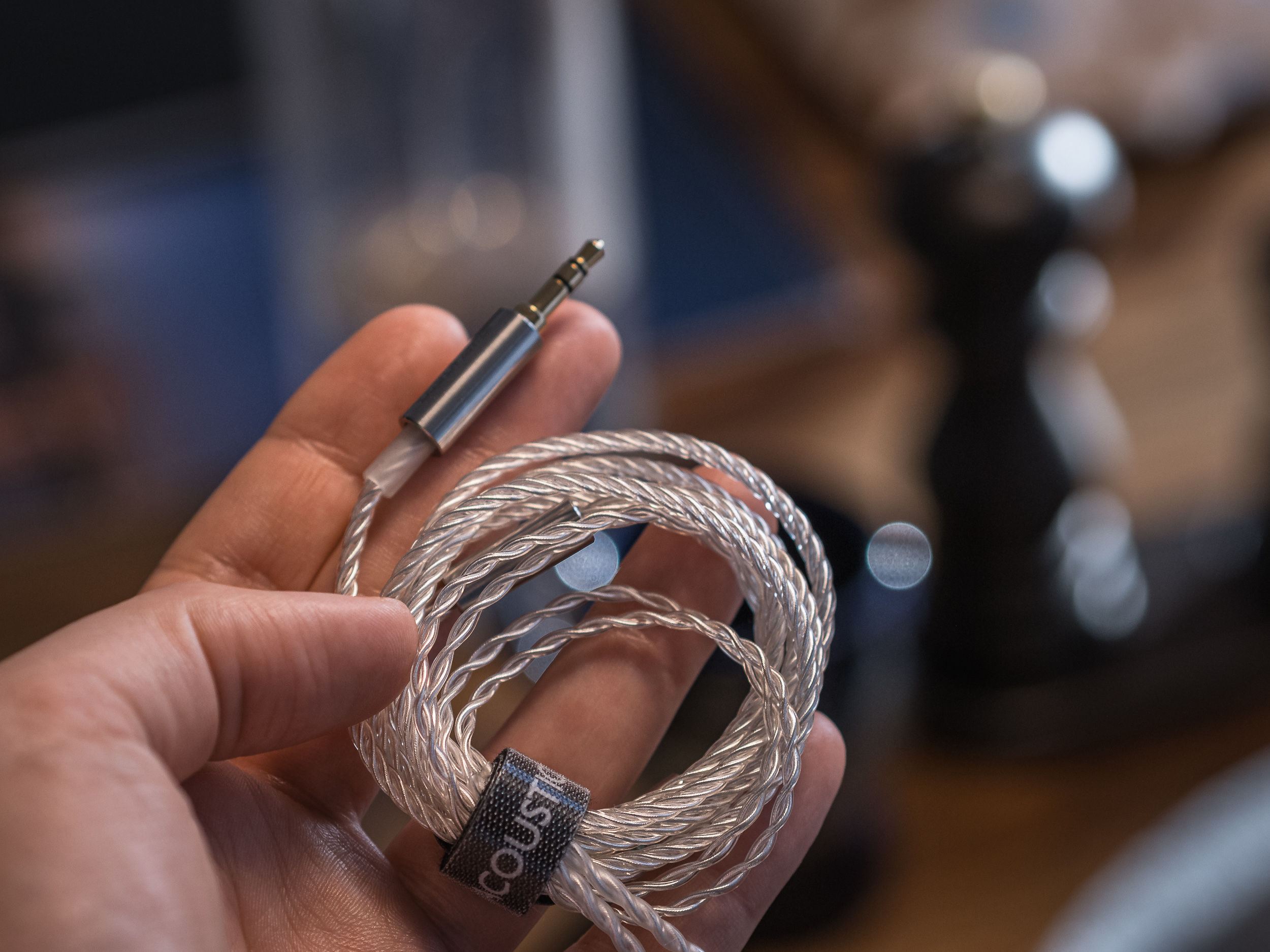
Sound Quality
My first impressions were quite positive. Binary Acoustic‘s Chopin is very clean sounding. Yet it also provides a prominent low-end. The audio is never harsh but very revealing. Binary did fairly well matching the mids and treble to Gizaudio‘s requirements.
The bass is boosted to strong levels, but shelved so deeply that it has zero bleed into the midrange. From 250 Hz and above, the Chopin follows a neutral curve with emphasis on harmonics. The result is a tuning that is revealing, balanced and energetic.
As for sound quality, the bass provides a high velocity that is typical of a dynamic driver. It‘s impactful and very motivated to pull focus on the audio‘s low-end. But the characteristics are very typical of dynamic drivers. That means the bass driver favors punch and oomph over micro-details. The lack of the finer nuances can make acoustical bass notes sound sloppy and remove texture from strings. This kind of bass will work well with Pop music but less with Classical.
The bass is a stark contrast to the midrange, which – opposed to the somewhat muddy bass – is very clean sounding. Vocals especially lack body weight but instead are tuned for clarity. So there is a slight emphasis on overtones, but overall the mids are agreeable and fairly neutral. Do note that Chopin‘s mids are on the verge of being shouty. Generally, accuracy does not come with a relaxed presentation.
The transition from midrange to highs is well done. So unlike many other IEM, it is unlikely that cymbals will splash on one recording but then seem to have gone amiss on another. The Chopin provides a good consistency and also impresses with technicalities. The treble extension is excellent for the price. The treble does not sound harsh, but there is a pinch too much that will provide some extra definition and gives the tones a slightly analytical touch, but overall the treble is very good.
Soundstage & Resolution
The Chopin does very well in spanning a soundstage that is decent in width and depth. The low-end pulls voices away from the listener and the great mid-high performance allows for great layering. But while the resolution from mids to highs is great, the contrast to the sloppy bass cannot be unheard. Moreover, if the track does not have much sub-bass, the mids and highs are pulled straight into the listeners face without much headroom. So the presentation can be hit or miss depending on the source material.
Measurements
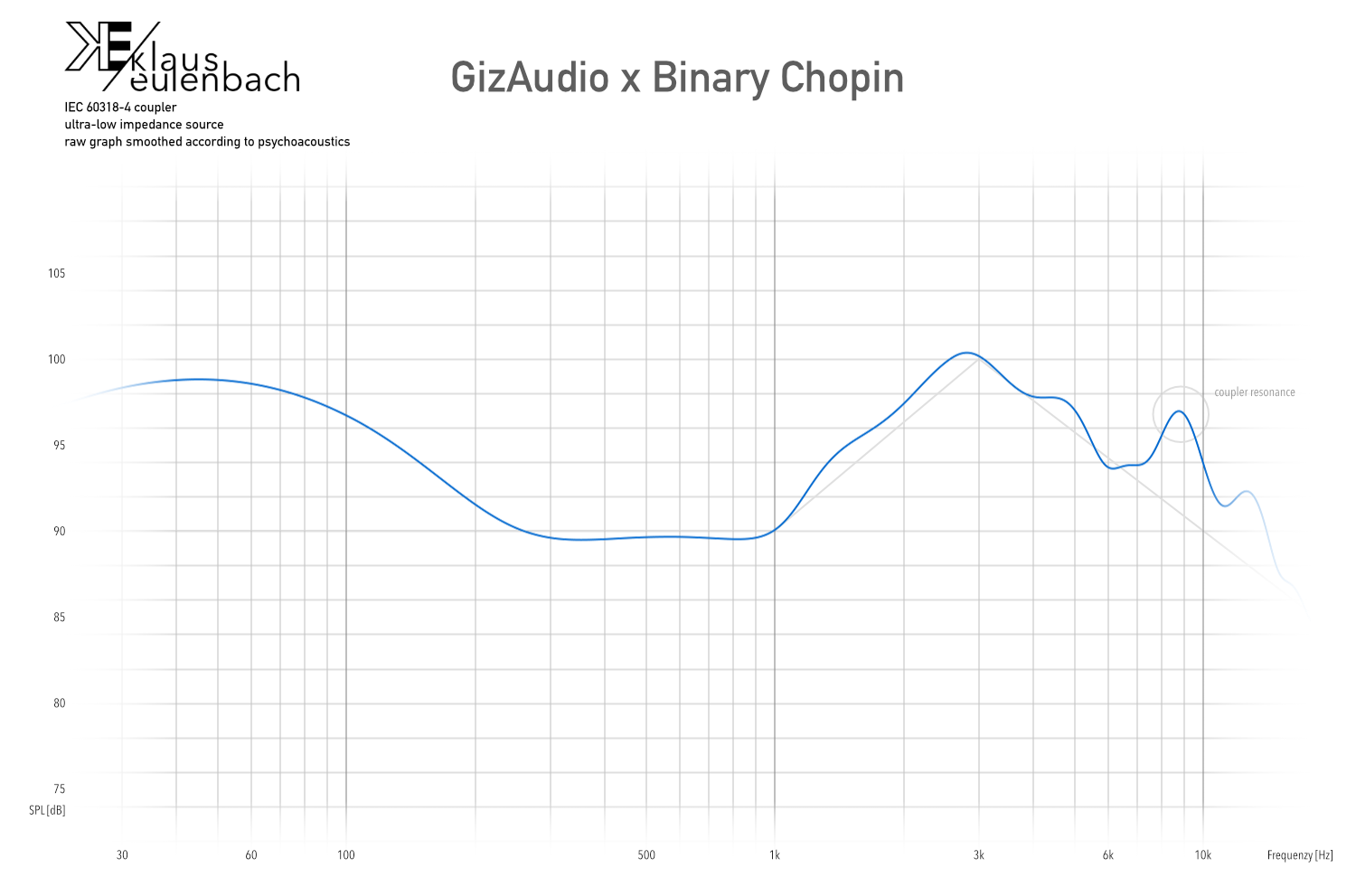
Sound Summary
Don‘t get me wrong, the Gizaudio x Binary Acoustics Chopin is a good IEM. It provides excellent clarity for the price without leaving any want for a more thumping low-end. Voices sound accurate and the treble dissects busy pieces with ease.
Personally, I disagree with the strong bass shelf as it sounds disjointed and fails to hold the music together as a whole. Looking at Gizaudio‘s optimal target, they suggest even stronger shelving – oh my!
I ask myself where „Chopin“ comes into place. Piano solos sound decent, but complex Orchestral pieces fall apart. I guess the aim was to impress with treble-oriented instruments and have thunderous drums on the other end, but that would be other composers than Frédéric Chopin.
Comparisons
Gizaudio recommends another IEM at this price point (and above). They claim that the AFUL Performer5 is „best in class“. Interestingly, the P5, which is also a hybrid design, has very different features. It is a warm IEM with a much softer midrange.
To my satisfaction, the Performer 5 has a good transition from lows to mids that is completely different to the disjointed low-end of the Chopin. The dynamic driver in the P5 has less impact but preserves more details compared to the more aggressive nature of the Chopin. I do prefer the midrange tuning of the Chopin, though. The P5 has a noticeable cut in the frequency range important for vocal presence. As a result, voices sound a little bit muffled and veiled. That jump in SPL also comes with a phase shift which can be audible for the discerning listener. 5 kHz and up are well done on the P5, with a little bit less definition than Chopin, but the consistency is flawed due to lack of lower treble.
Whereas the Chopin has too much energy for my liking, the Performer 5 has too little. If you don‘t mind extra treble detail, the Kiwi Ears Quintet combines Chopin‘s midrange accuracy with the better-tuned bass. Yet this one also comes with some compromises, for example too much sparkle.
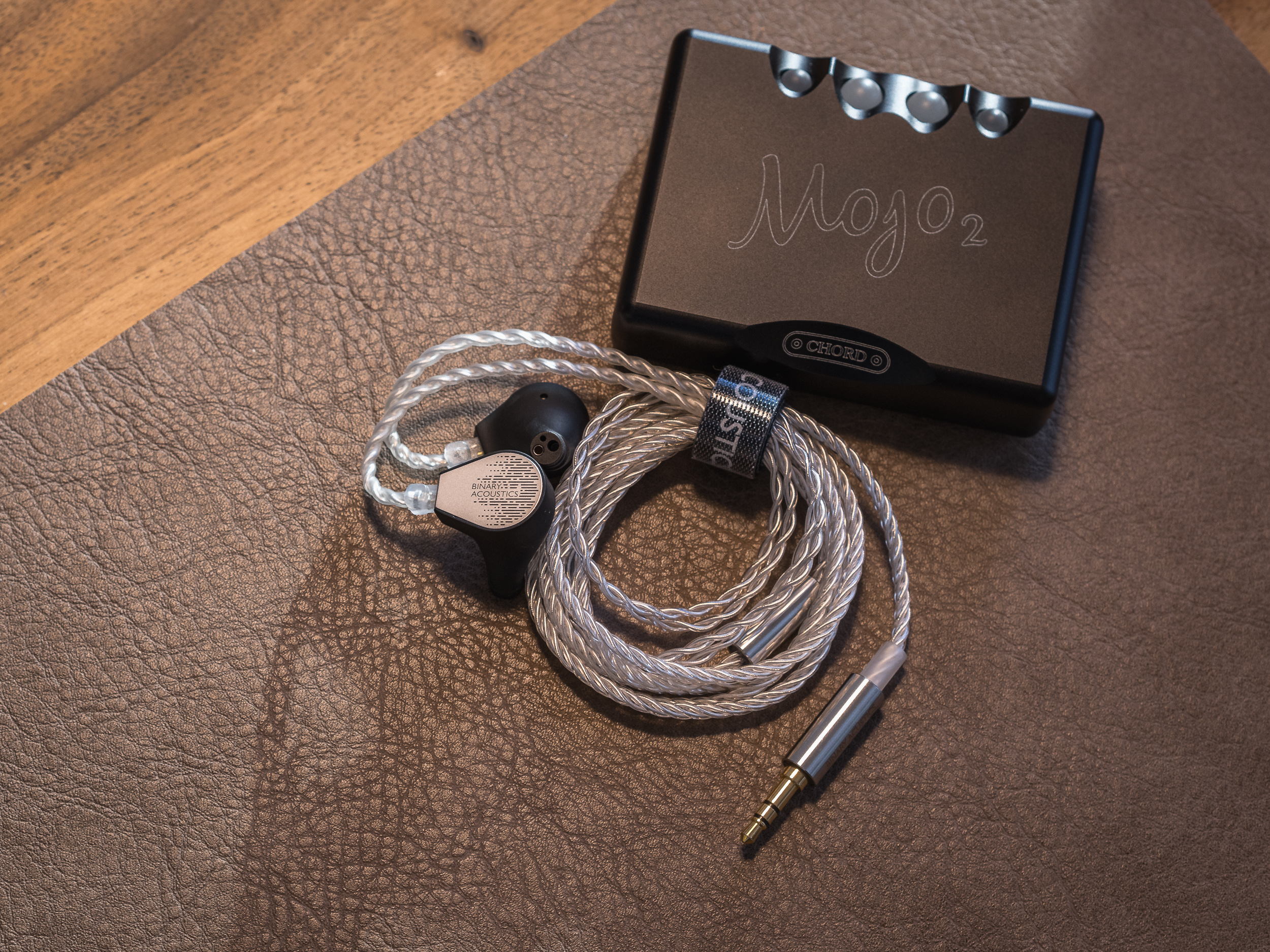
Verdict
Binary Acoustics achieved a good entry into the Chi-Fi market with the Chopin. The Gizaudio collaboration is a good marketing effort but could also be the reason for a disjointed bass. The midrange and treble quality is very good, though. At only 200 USD, with great comfort and nice cable, the Chopin is definitely commendable.
